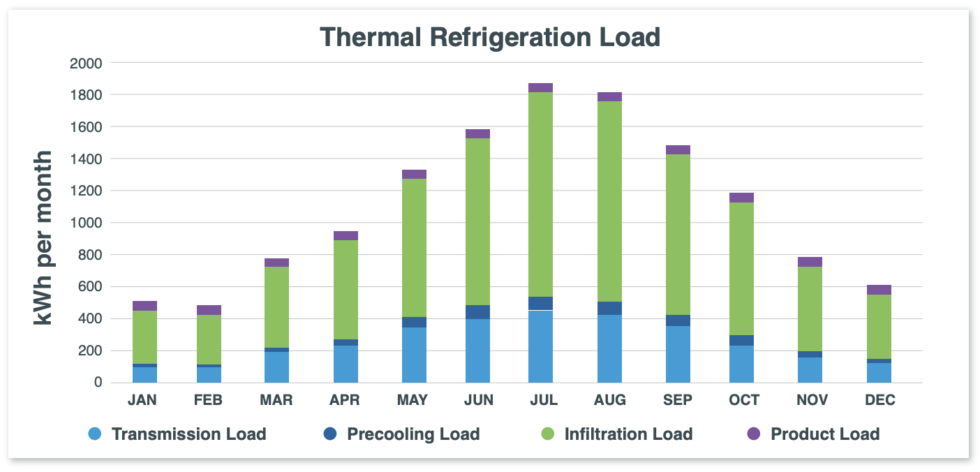
BlueSeal – Air Curtains for Lower Emissions in TRU: Reducing Infiltration Loads to Cut Fuel Use and Pollution
Research by CENEX UK, a not-for-profit organisation specialising in low-emission vehicle research, has shed light on the environmental footprint and energy consumption of transport refrigeration units (TRUs). Their April 2021 white paper highlights a significant source of inefficiency: infiltration load – the thermal energy lost whenever TRU doors are opened.
April 2021, https://www.cenex.co.uk/app/uploads/2021/04/Refrigerated-Transport-White-Paper.pdf

Understanding Infiltration Load in TRUs
CENEX defines infiltration load as the heat gain that occurs when the doors of a refrigerated trailer or truck are open. The thermal loss happens in three ways:
- Air exchange – chilled air is replaced by ambient air
- Product warming – goods lose cold energy to warmer internal air
- Structural warming – fridge walls, floors, ceilings, and doors absorb heat from the ambient air
The CENEX graph shows that infiltration load accounts for roughly 70% of the total thermal refrigeration load – more than triple the contribution of the transmission load (heat transfer through insulated walls while doors are closed).
Why Reducing Infiltration Load Lowers Emissions
When infiltration load is high, TRUs work much harder to restore set temperatures. This increases fuel consumption in diesel-powered refrigeration engines or drains battery reserves in electric TRUs. CENEX’s data confirms that during delivery routes, door openings can increase cooling energy use by 3 to 5.5 times compared to closed-door transit.
Reducing infiltration load therefore directly lowers fuel usage, operating costs, and emissions – making it a key strategy for lower emissions in TRU operations.
How BlueSeal Air Curtains for Lower Emissions in TRU Work
For over a decade, BlueSeal has provided air curtains for lower emissions in TRU systems, creating an invisible but effective barrier over rear and side doors. These air curtains significantly reduce the infiltration of warm air without interfering with driver operations.
Unlike PVC strip curtains, BlueSeal offers a hygienic, driver-friendly, and maintenance-light solution. Independent testing shows BlueSeal can reduce infiltration load by 30-45%, lowering total thermal load and cutting both CO₂ emissions and fuel costs.
The Real-World Scale of Infiltration Loads
CENEX’s scenario of just four door openings per day is likely conservative. In urban distribution routes, doors may be opened far more frequently and for longer durations – meaning actual infiltration loads could exceed the study’s findings.
This challenge is even greater in frozen transport, where temperature differences are larger and product integrity is more sensitive to small thermal changes. For these cases, air curtains for lower emissions in TRU become even more critical.
TRU Auxiliary Engines: A Hidden Emissions Problem
Many large refrigerated trucks and trailers use auxiliary diesel engines to power refrigeration units. These engines emit:
- 16× more nitrogen oxides (NOx) than a truck’s main engine
- 40× more particulate matter
Because auxiliary engines must work harder to counter high infiltration loads, they produce more pollution. By reducing infiltration load, BlueSeal air curtains for lower emissions in TRU directly reduce the runtime and workload of these engines, delivering both environmental and economic benefits.
In summary: CENEX’s research confirms infiltration load as the largest component of TRU thermal demand. BlueSeal’s air curtains for lower emissions in TRU help operators tackle this problem head-on, lowering fuel use, cutting emissions, and protecting temperature-sensitive goods during transport.
For more information on BlueSeal air curtains, please contact our Brightec consultants at [email protected]